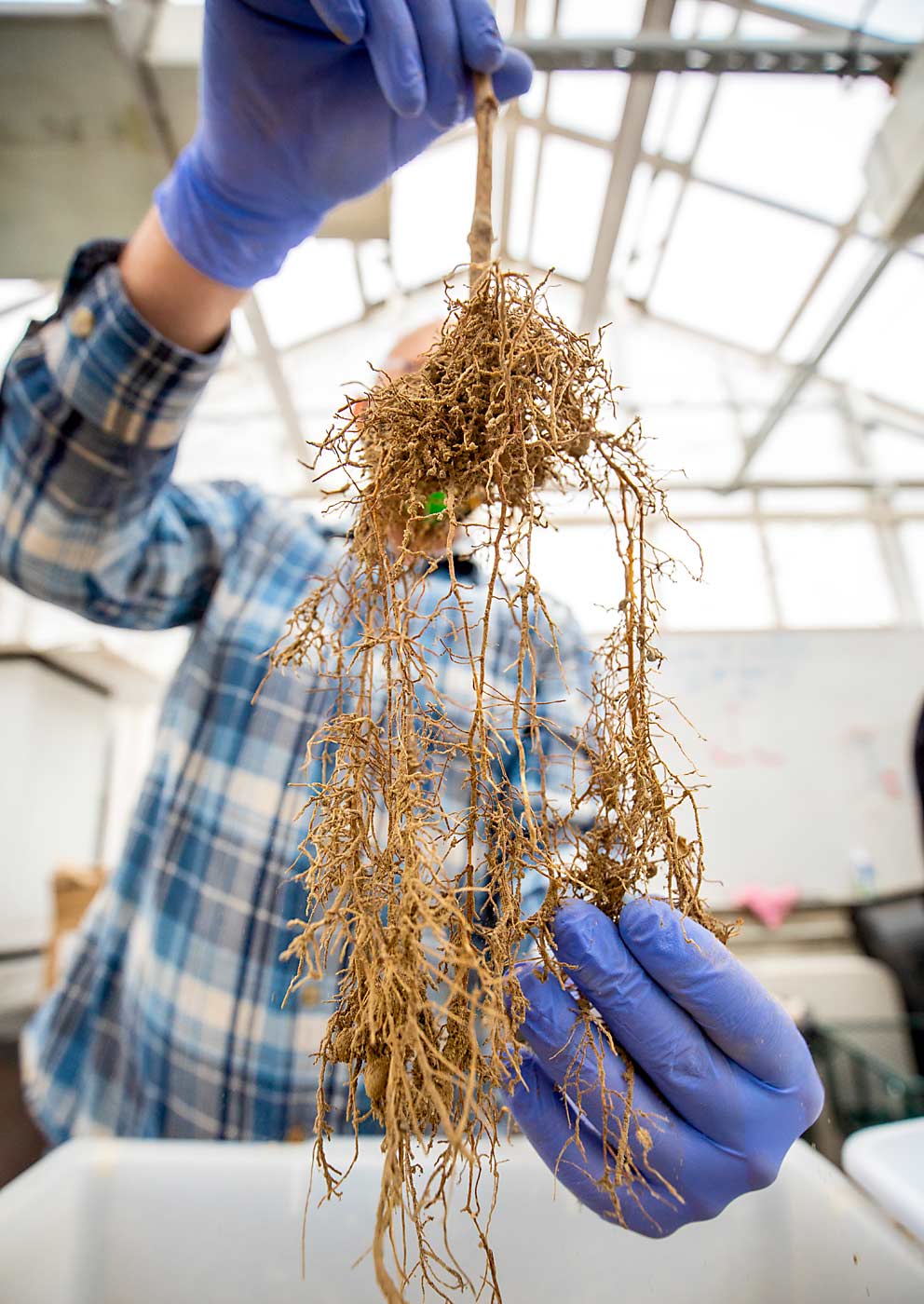
Research supported by Washington state’s wine grape growers and wineries shows promising benefits from soil fungi that could reduce the need for vineyard fertilizers, improve vine growth and contribute to more sustainable growing practices.
Advancements in the study of soil fungi in recent years have led to greater understanding of the role they can play in many crops, from tree fruit and vegetables to wheat and wine grapes. These mycorrhizal fungi, from the Greek words for fungus (myco) and root (rhiza), are symbiotic fungi that form a mutual association with roots of nearly all plants. Arbuscular mycorrhizal fungi, or AM fungi, are those that penetrate cells of vascular plant roots to form arbuscules —tiny structures — within the roots to create an intimate relationship that can benefit plant growth.

In this symbiotic relationship, the plant provides carbon to the fungi, and in return the fungi grow long threads of branching filaments near the roots called hyphae. These hyphal structures bring nitrogen, phosphorus and water to the root surface and can improve the plant’s nutrient and water uptake. AM fungi are also important to soil structure and function and can increase soil aggregation, contribute to nutrient cycling and enhance soil carbon storage.
Past studies
Previous research has shown that grapevines can be strongly dependent on AM fungi for growth and development. Inoculations with AM fungi have been shown to increase shoot length and phosphorus uptake in some wine grape cultivars, such as Pinot Noir. Studies have also found that, across the plant kingdom, species and cultivars respond differently, and some respond more strongly to the AM fungi than others.
It’s also been shown that the fungi can especially benefit plant growth under low-nutrient conditions and may reduce the need for chemical fertilizers. Moreover, once AM fungi are established, they are self-renewing. Unlike fertilizer that often requires repeated applications, AM fungi are living organisms and should be self-regenerating, which creates the potential to reduce fertilizer inputs and save money in fertilizer costs.
AM fungi typically exist in natural landscapes, but tillage practices can disrupt the hyphal networks and reduce the density and richness of fungus species in the soil. However, cultured AM fungal inoculants are commercially available to rebuild the soil fungal community and maximize benefits for crop plants. Washington wine grape growers are interested in using AM inoculants in vineyards for sustainable vineyard health, but many questions need to be addressed before widespread use occurs — such as source of inoculant, cultivar response, timing of application, soil type and more.
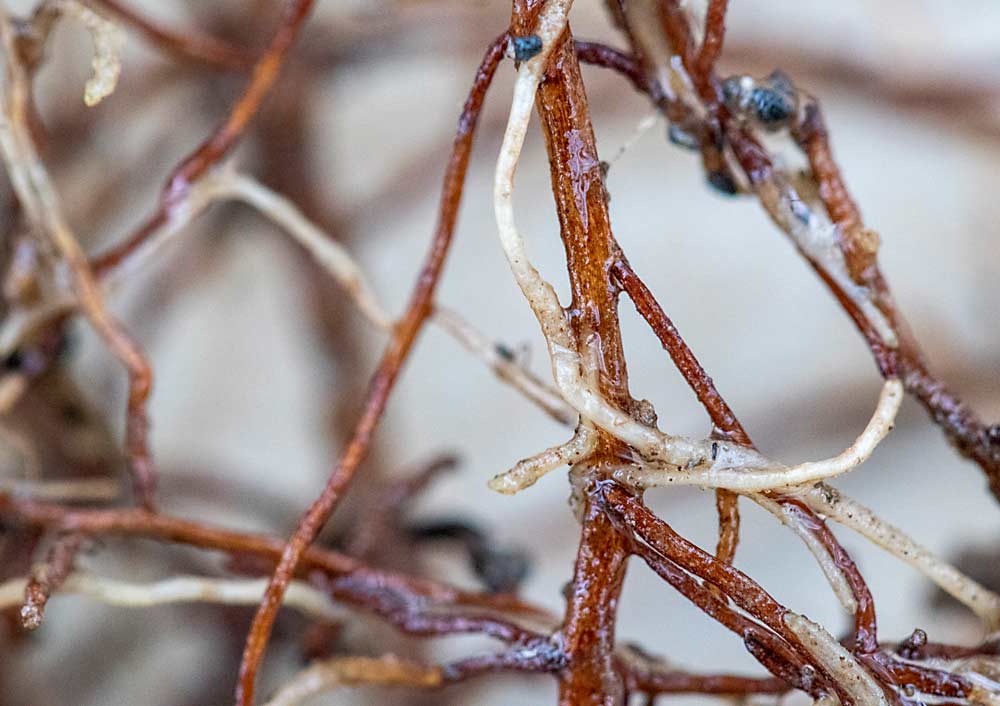
Research steps in


Tanya Cheeke, assistant professor of microbial ecology at Washington State University, Tri-Cities, and KC Cifizzari, WSU graduate student, led a study to better understand the impact of mycorrhizal inoculations on wine grape production in Washington. The research was funded by WSU, the Auction of Washington Wines and all Washington state wine grape growers and wineries through the Washington State Wine Commission. Cheeke received an additional grant from WSU’s Center for Sustaining Agriculture and Natural Resources to fund a related field experiment.
The wine grape project tested the growth response of Chardonnay and Merlot cultivars under four treatments: an untreated control, an inoculation with AM fungi, phosphorus fertilizer, and both AM fungi and phosphorus.
The long-term goal of the research is to understand the effectiveness of AM fungal inoculants on grapevine growth in order to inform sustainable vineyard management strategies.
To test the effectiveness of a mycorrhizal inoculant product (MycoBloom) on grapevine growth, cuttings of Chardonnay and Merlot cultivars were grown in 4-liter pots for five months in a greenhouse at WSU’s campus in Richland. Phosphorus fertilizer was added when vines had three to four true leaves, and 15-0-15 fertilizer and micronutrients were applied to all vines. Powdery mildew was managed using mineral oil spray applications.
Grapevine growth data was collected, including vine height, leaf number, shoot number, chlorophyll content, shoot and root biomass. The percentage of root colonization by the AM fungi was also measured.
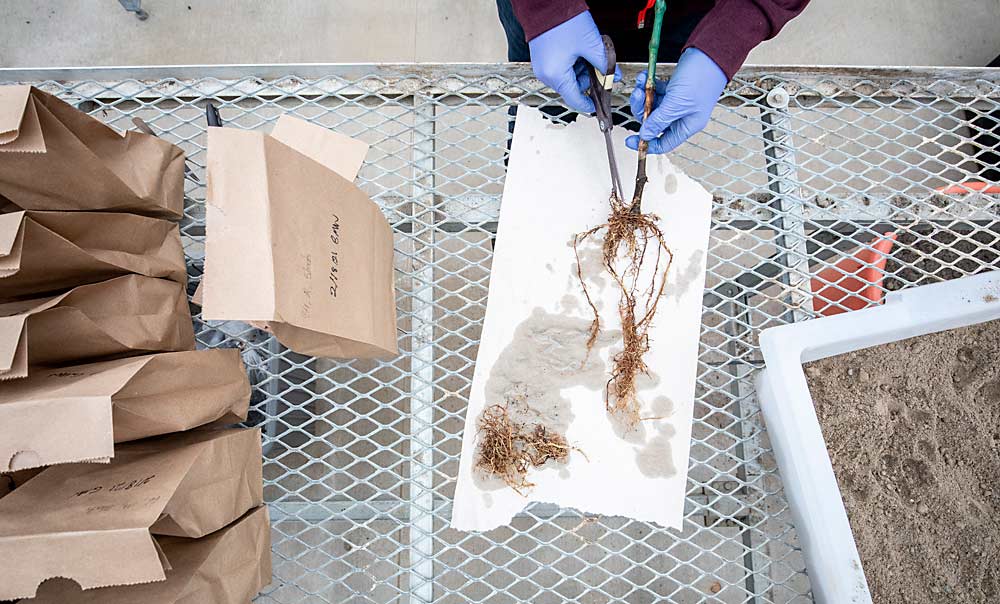
Vine responses
Phosphorus, a macronutrient important to vine growth, is most available for plant uptake in a soil pH range of 6.5 to 7.5 and above 8.5. Though the soil phosphorus level of 10.4 ppm would be considered more than adequate for wine grape growth, vines grown in pots can quickly run out of nutrients. In this project, all of the vines treated with phosphorus had a strong response across all treatments, which indicated low phosphorus levels in the pots.
Research findings included:
1. Vines treated with the phosphorus fertilizer had the tallest shoots across all treatments.
2. In the absence of phosphorus fertilizer, both Merlot and Chardonnay grew taller with AM fungi compared to the control, but the effect was more pronounced for Merlot.
3. Merlot vines treated with both AM fungi and phosphorus had significantly greater root biomass and root-to-shoot ratio compared to other treatments.
4. Chardonnay and Merlot both showed increased foliar phosphorus in the AM fungi treatment.
5. Both varieties showed lower root colonization by AM fungi in the treatment where both AM fungi and phosphorus were added.
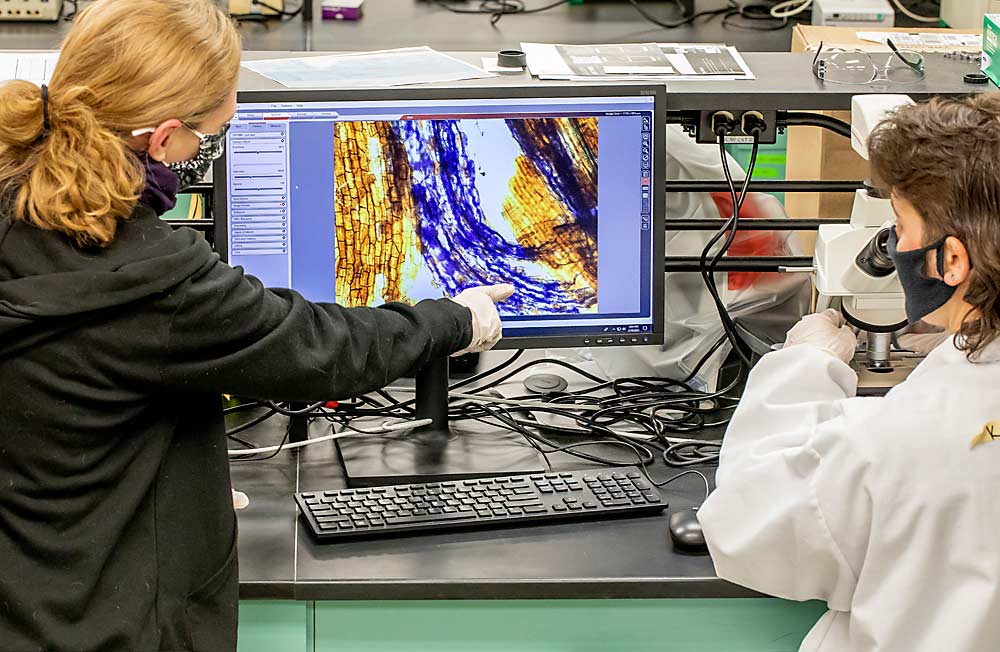
Stronger Merlot response
Overall, Merlot vines exhibited a stronger growth response to the AM fungi treatment and the phosphorus treatment compared to Chardonnay vines (see chart). This varietal difference highlights the importance of host-plant identity and the possible differences in resource allocation between different wine grape varieties.
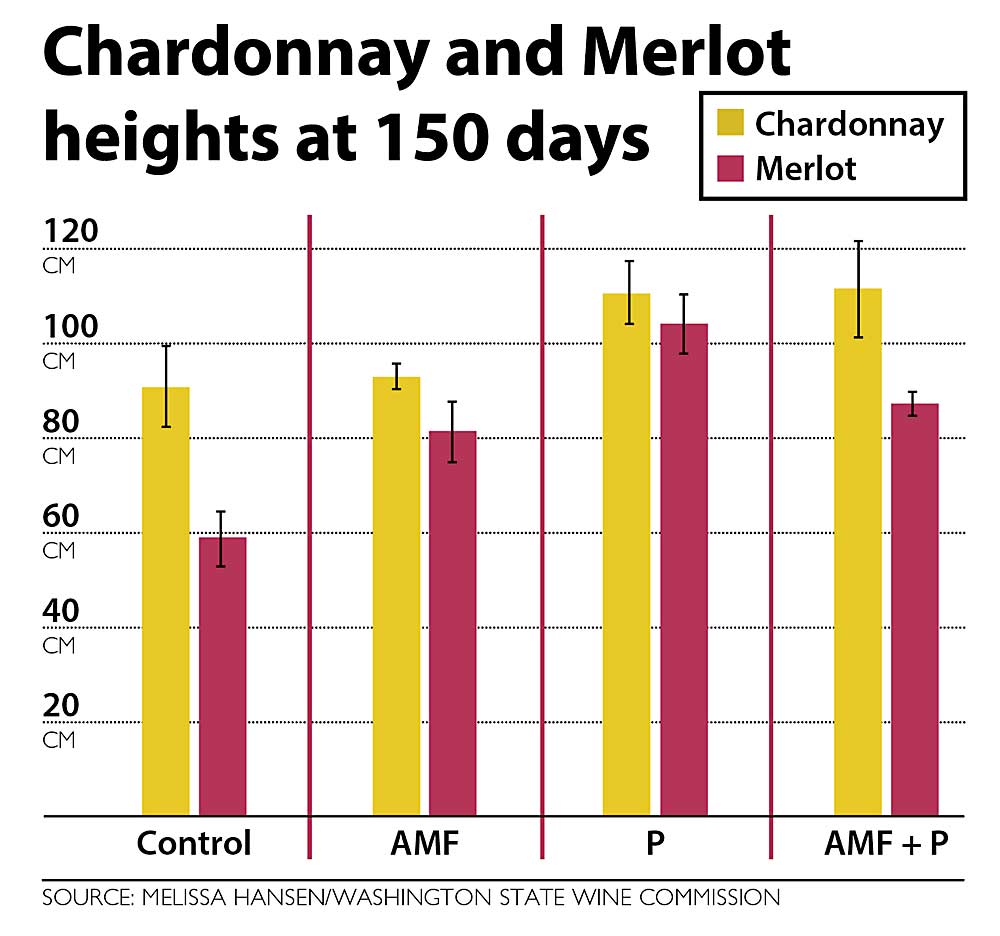
This study showed that AM fungi could be beneficial to Merlot total biomass and assist vines with phosphorus uptake in the absence of fertilizer. The combined treatment significantly boosted root biomass in Merlot vines when phosphorus fertilizer was added to the soil. An initial growth spurt was observed 60 days after planting in the combined treatment Merlot vines, though not in the Chardonnay treatment. Merlot and Chardonnay plants also showed increased foliar phosphorus in the AM fungi treatment compared to the uninoculated controls, at the end of the experiment.
While the greenhouse study provided ideal growing conditions of water, light and temperature, grapevines typically grow under more stressful conditions in the field, where they would likely perform slightly differently. Thus, an ongoing field study, to mimic the greenhouse study, has been initiated to compare effects from the greenhouse to those observed in the field.
For growers, AM fungi could be a valuable tool for those seeking to reduce inputs. The fungi show potential to reduce phosphorus fertilizer applications and costs for initial vine development. Further research is needed to expand the list of wine grape varieties tested and investigate vine responses from different AM fungi species and inoculant mixes. •
Research needs remain
For this trial, Tanya Cheeke selected a mycorrhizal inoculant product — MycoBloom, developed by researchers at Indiana University — that contains seven fungal species and has been used successfully in many scientific studies, including on perennial plants. The product must be applied to the root zone of plants, such as in the nursery or at planting; it cannot be applied on top of the soil in existing plantings, according to Cheeke, assistant professor of microbial ecology at WSU, Tri-Cities. More research is needed to understand the optimum application method and time, as well as best fungal species, for Washington vineyards.
—by KC Cifizzari, Tanya Cheeke and Melissa Hansen
KC Cifizzari is pursuing a master’s degree in biological sciences at Washington State University, Tri-Cities. Tanya Cheeke is assistant professor of microbial ecology at WSU, Tri-Cities. Melissa Hansen is research program director for the Washington State Wine Commission.






Leave A Comment